Item added to cart
Your cart is currently empty.
Return to shop
Hardanger Cutlery has long been a symbol of Norwegian design and quality. However, even with good cleaning, the cutlery can develop stains and marks over time. This may be due to water quality, food residue, or simply general wear and tear. Here you can read about our best tips on how to effectively restore the shine to your Hardanger Cutlery, completely stain-free!
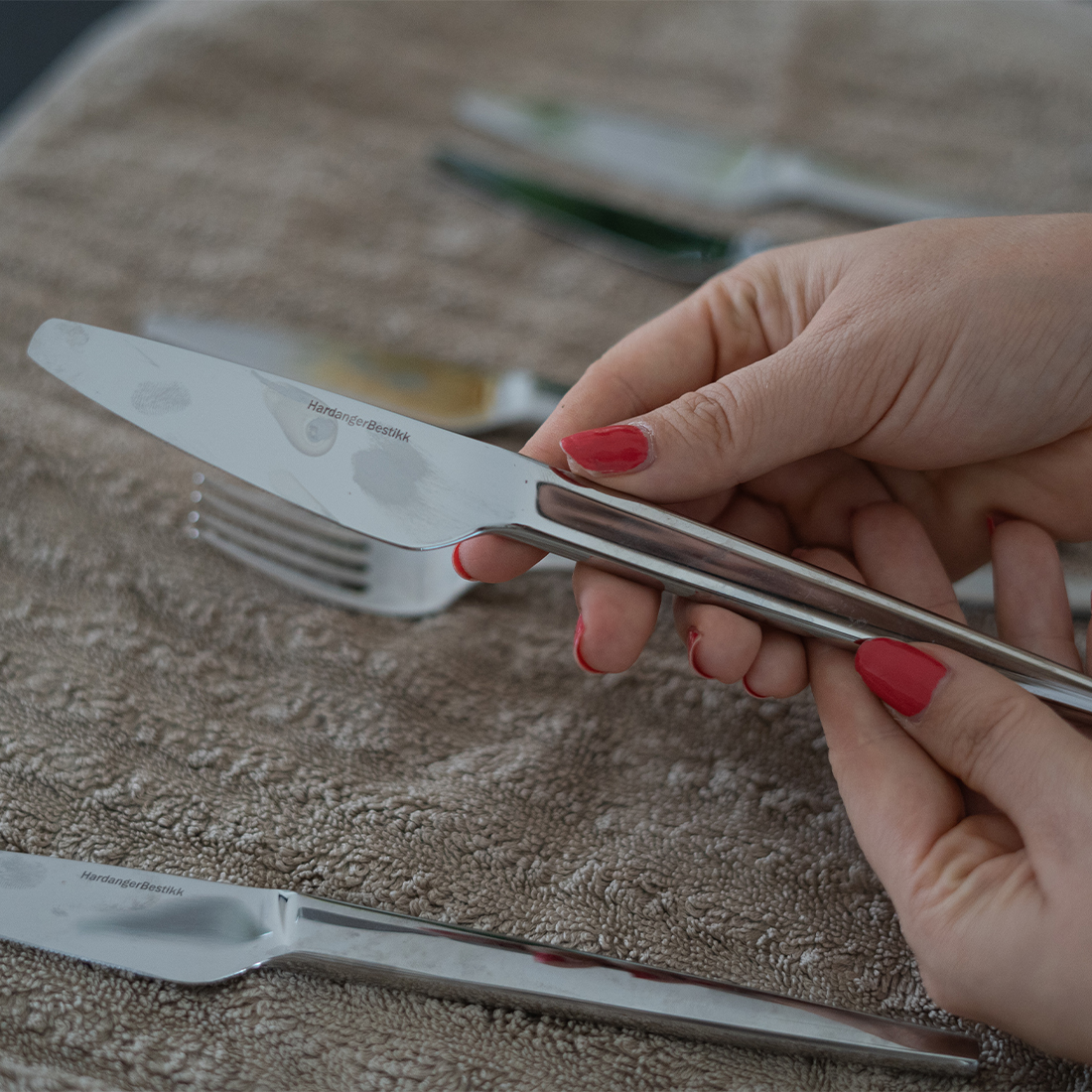
Find your stained cutlery. If the cutlery has a lot of stains, it may be a good idea to rinse it in hot soapy water before moving on to step 2, remember to dry the cutlery first.

Use a soft sponge or microfiber cloth to apply a small amount of cleaning cream to the stained area. Make sure the cleaning cream does not contain abrasives, as this can damage the cutlery. We used wonderscrub from C soaps.
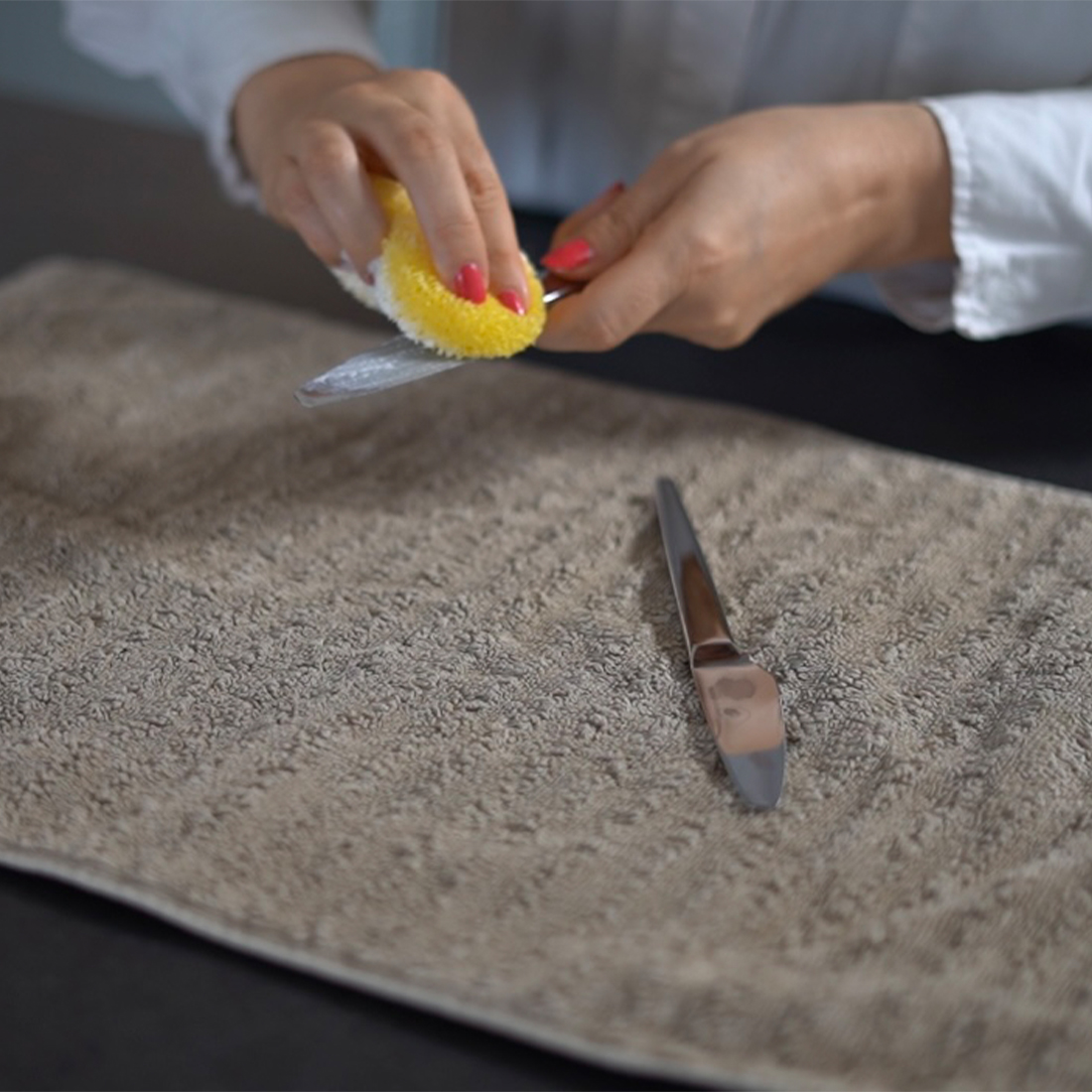
Gently rub the scouring cream into the stain using circular motions. Apply a bit of extra pressure on the area, but be careful not to scratch or damage the cutlery. For deeper or more stubborn stains, you might need to let the scouring cream sit for a few minutes before continuing with the scrubbing.
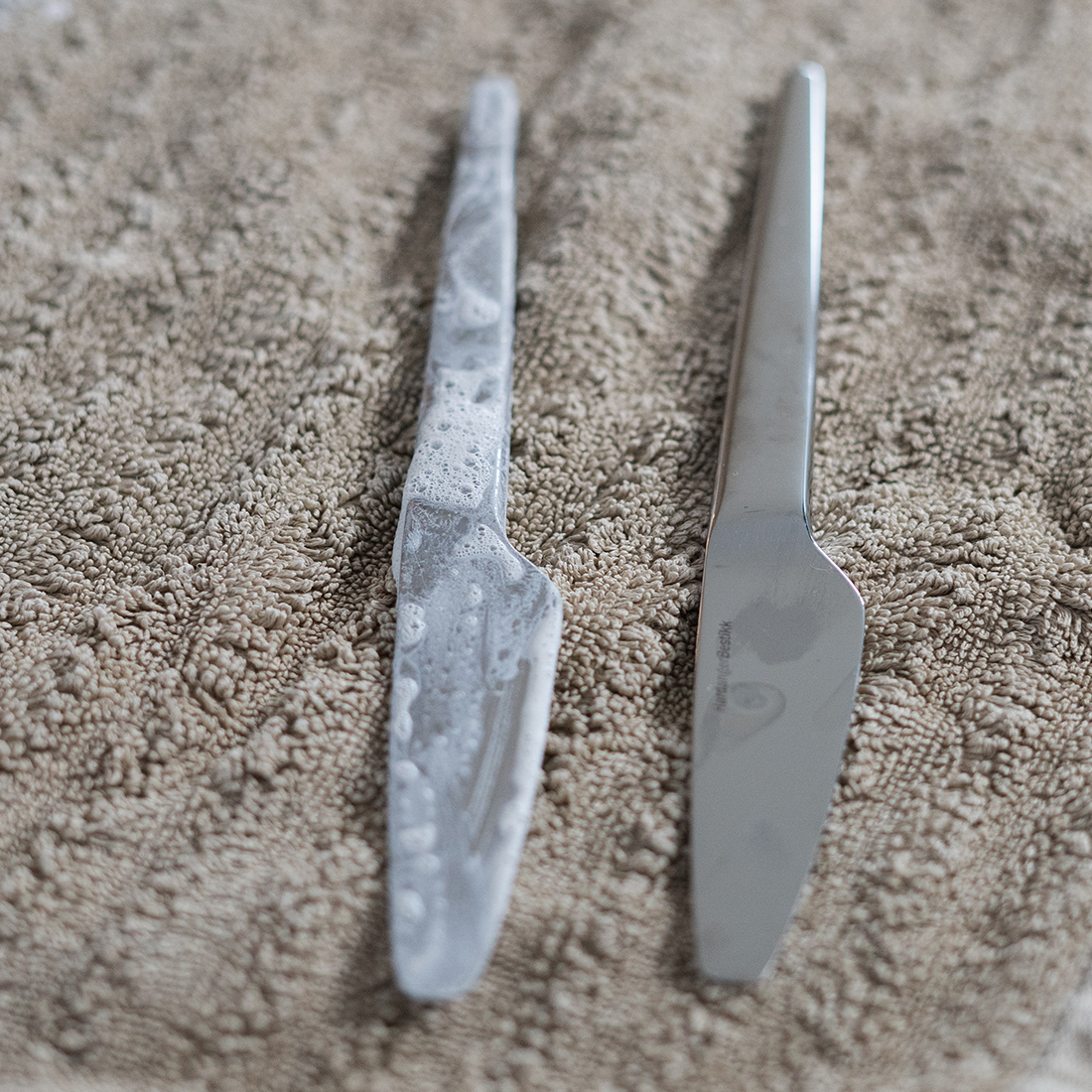
Rinse the cutlery thoroughly under running warm water to remove all traces of the scouring cream. Check to see if the stain is gone. If it’s still visible, you can repeat steps 2 and 3. Some cleaning creams might leave a film on the cutlery, so it might be a good idea to finish by rinsing the cutlery in soapy water.
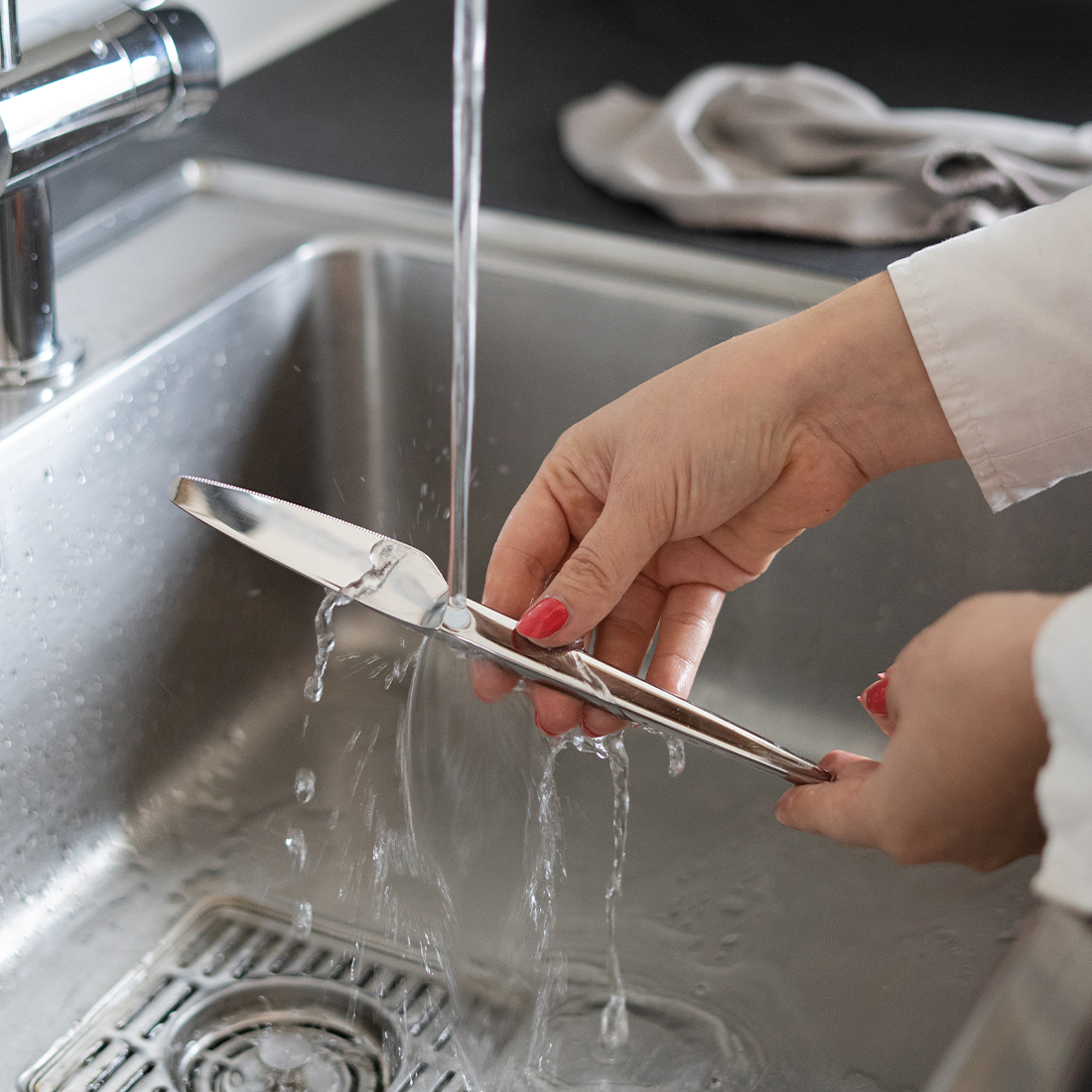
Immediately dry the cutlery with a soft cloth or paper towel to avoid water marks. For an extra shine, we recommend polishing the cutlery with a microfiber cloth.
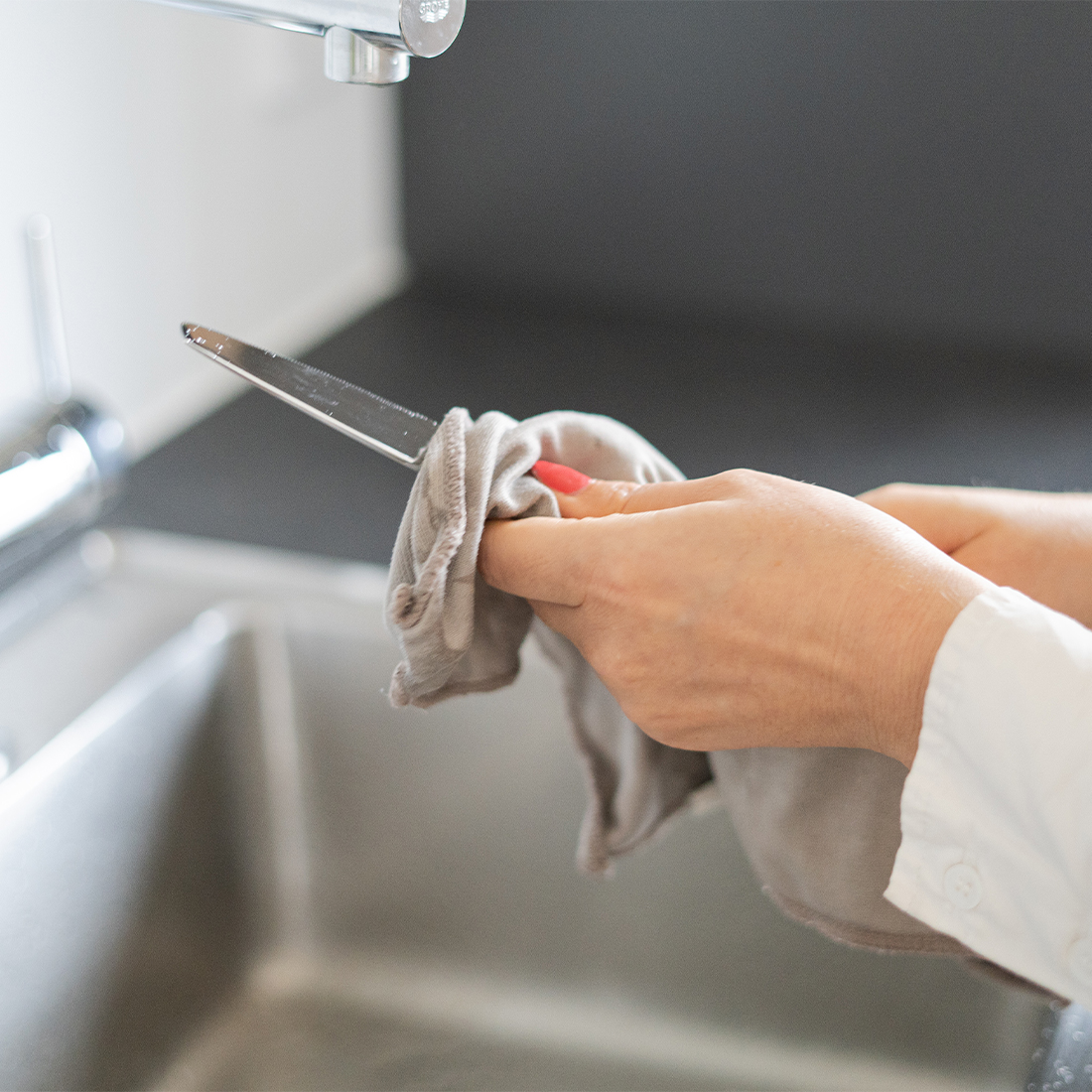
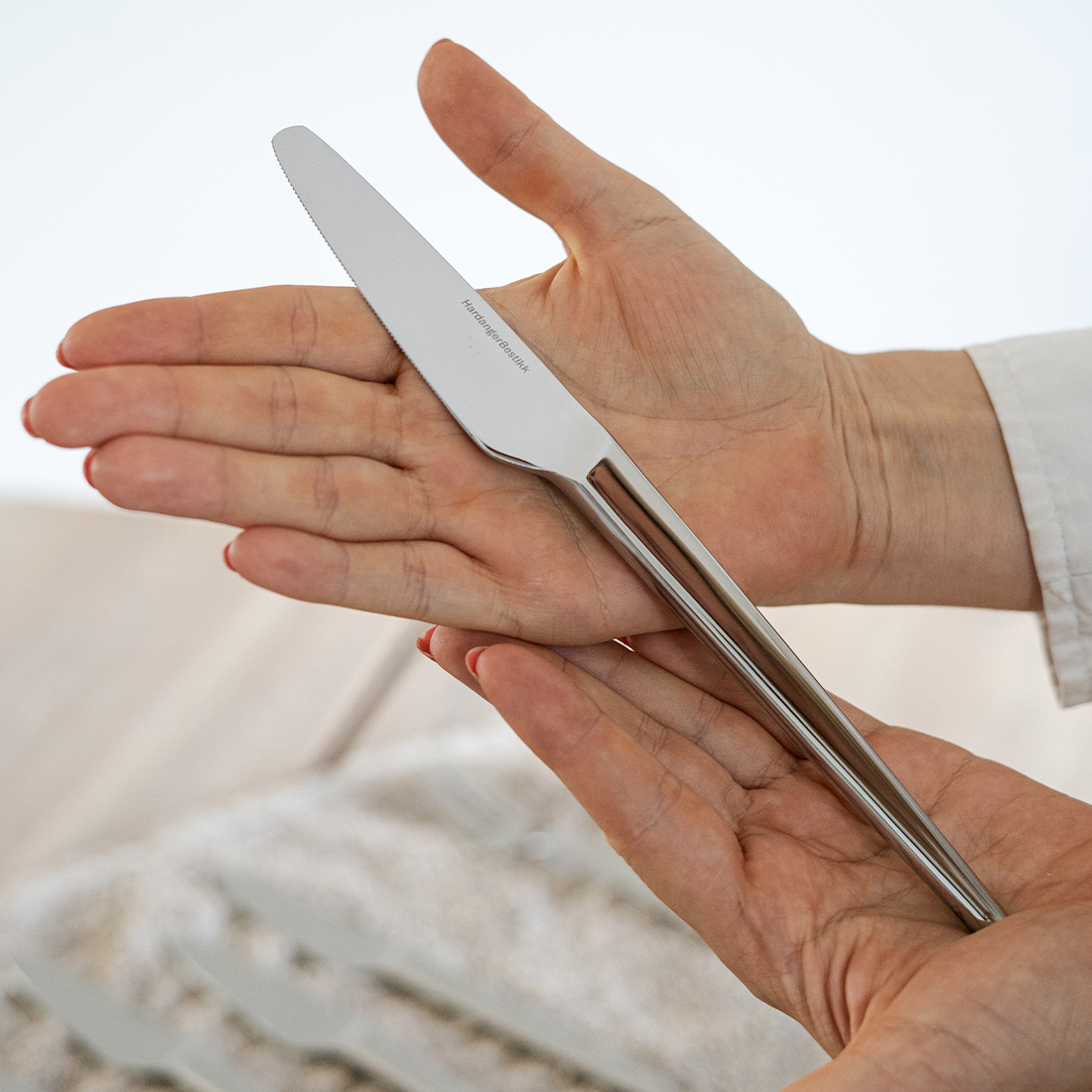
Washing items that are not suitable for the dishwasher along with cutlery is one of the primary reasons for rust on cutlery. For instance, iron objects can release small iron particles that may cause ruststains on cutlery. To avoid this, we recommend not washing these types of items in the dishwasher with cutlery: cheese slicer, garlic press, egg slicers, various types of strainers, and objects that already have rust.
Maintaining the quality of your Hardanger Cutlery is not just an investment in the product itself, but also an investment in the many meals and memories that comes with it.